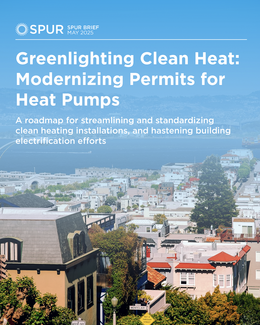California and the Bay Area are using zero-emission appliance rules, building codes, and climate action plans to push the heating appliance market and consumers toward a gas-free future for buildings. However, fragmented and outdated permitting systems are posing a major barrier to adoption of electric appliances like heat pumps and delaying the health and climate benefits of eliminating gas-powered building appliances.
In the Bay Area, heat pump installations are slowed or derailed by inconsistent and overly complex permitting processes. Jurisdictions vary widely in requirements, zoning rules are often restrictive, and multiple permits are frequently needed for a single heat pump installation. Contractors face unpredictable inspections, excessive paperwork, and high/inconsistent fees. These headaches drive widespread permit non-compliance — permit rates for electric heating equipment often fall below 20%.
Permitting hurdles are especially problematic for people relying on clean energy rebates, which require permit verification. These hurdles threaten California’s goal of installing 6 million heat pumps by 2030 and achieving zero-emission equipment standards in the Bay Area.
Streamlining and standardizing permits would improve safety and code compliance, lower costs, reduce burdens on contractors and consumers, and create a fairer, more efficient system. It would also ensure that public funding supports real progress — not more red tape — making clean heating more accessible and competitive. SPUR offers five recommendations to achieve these goals.
